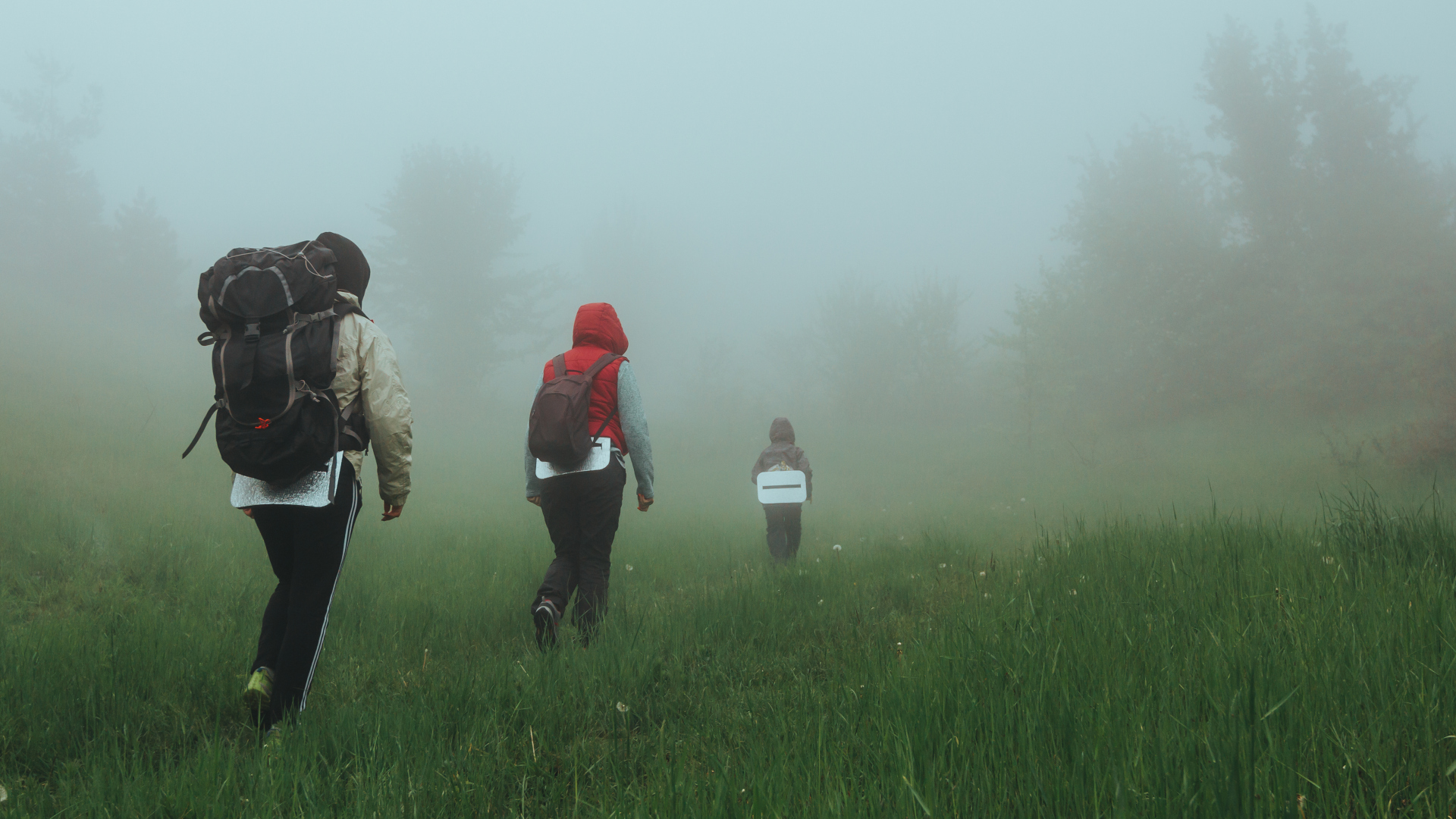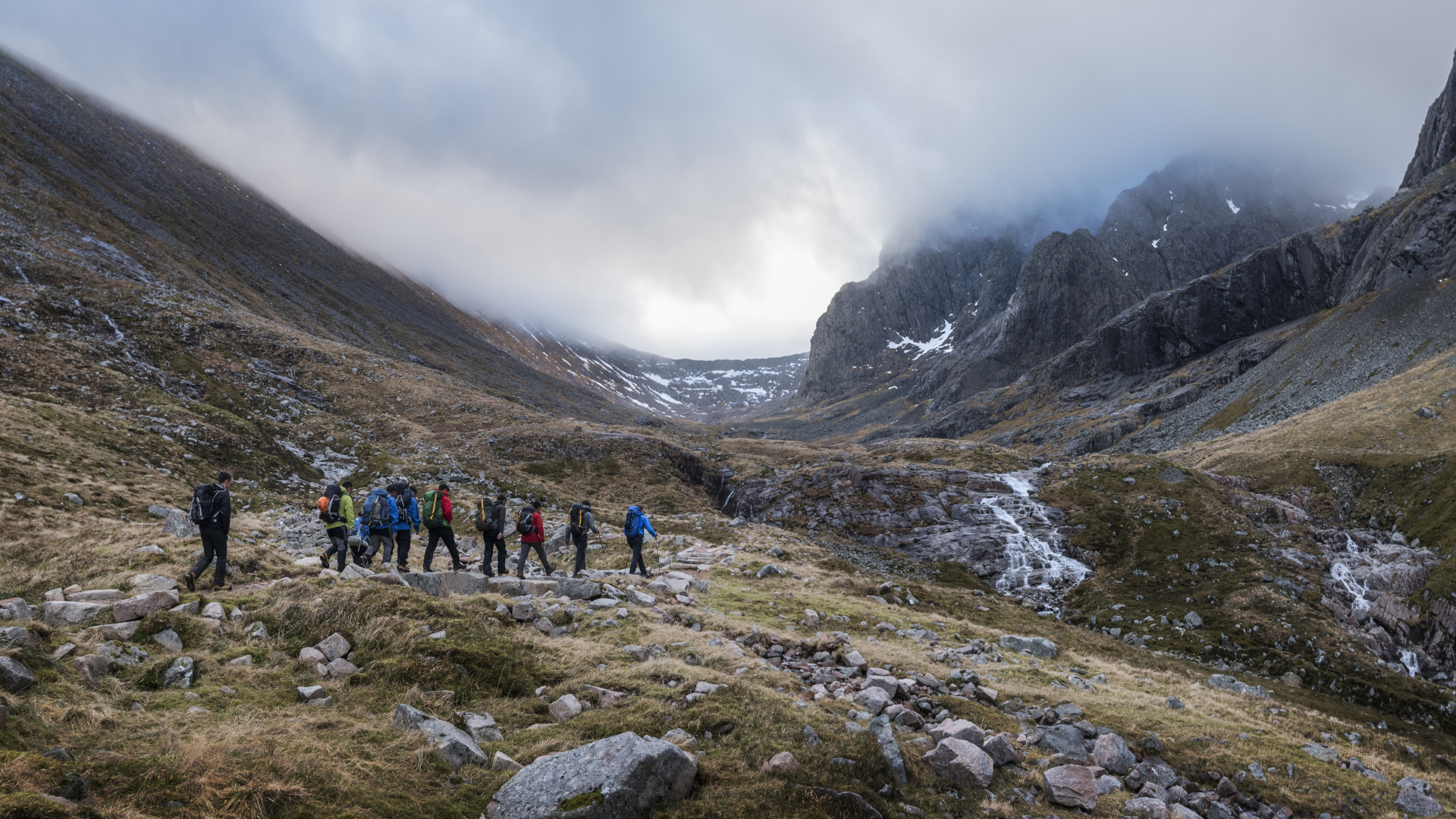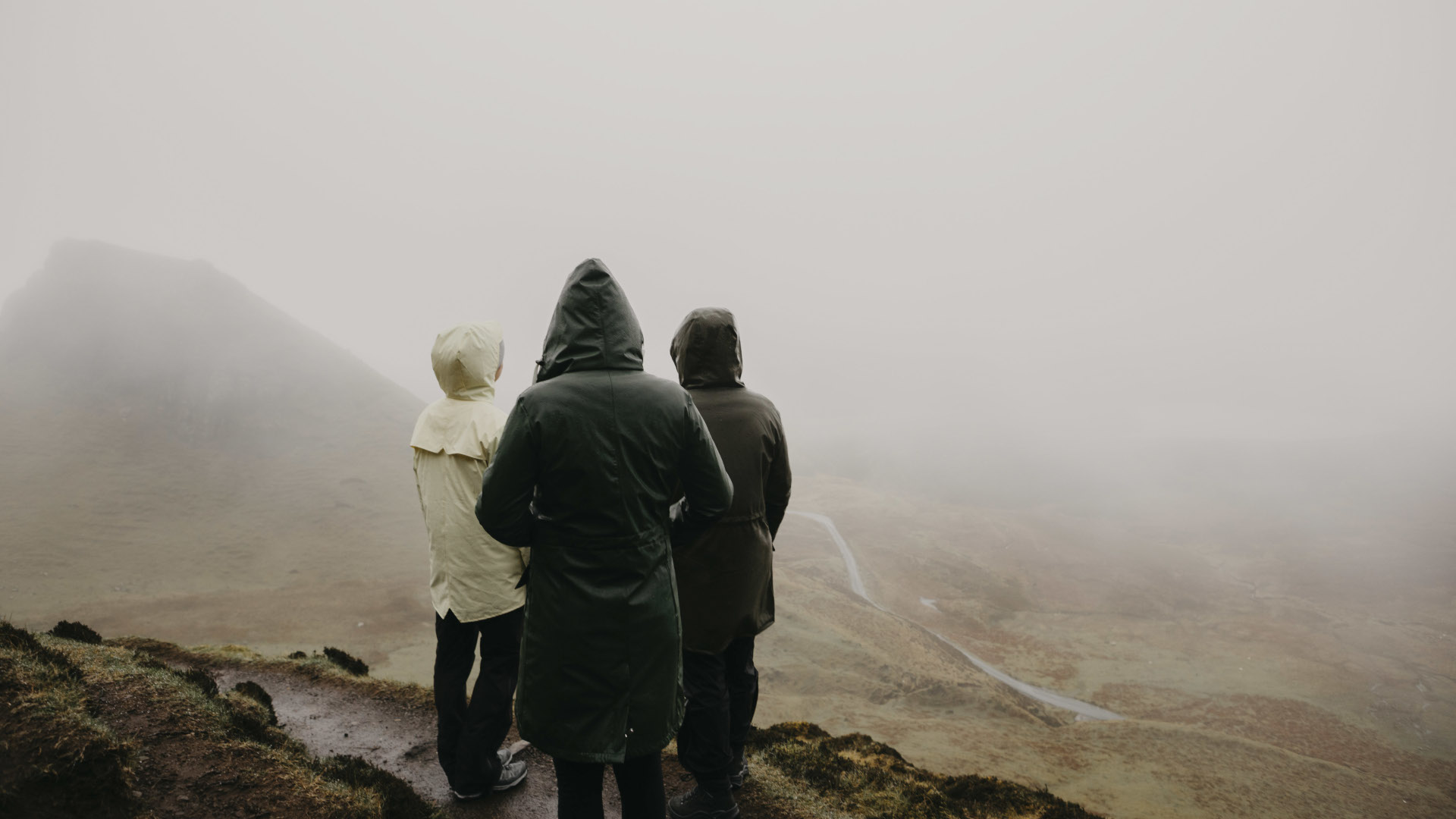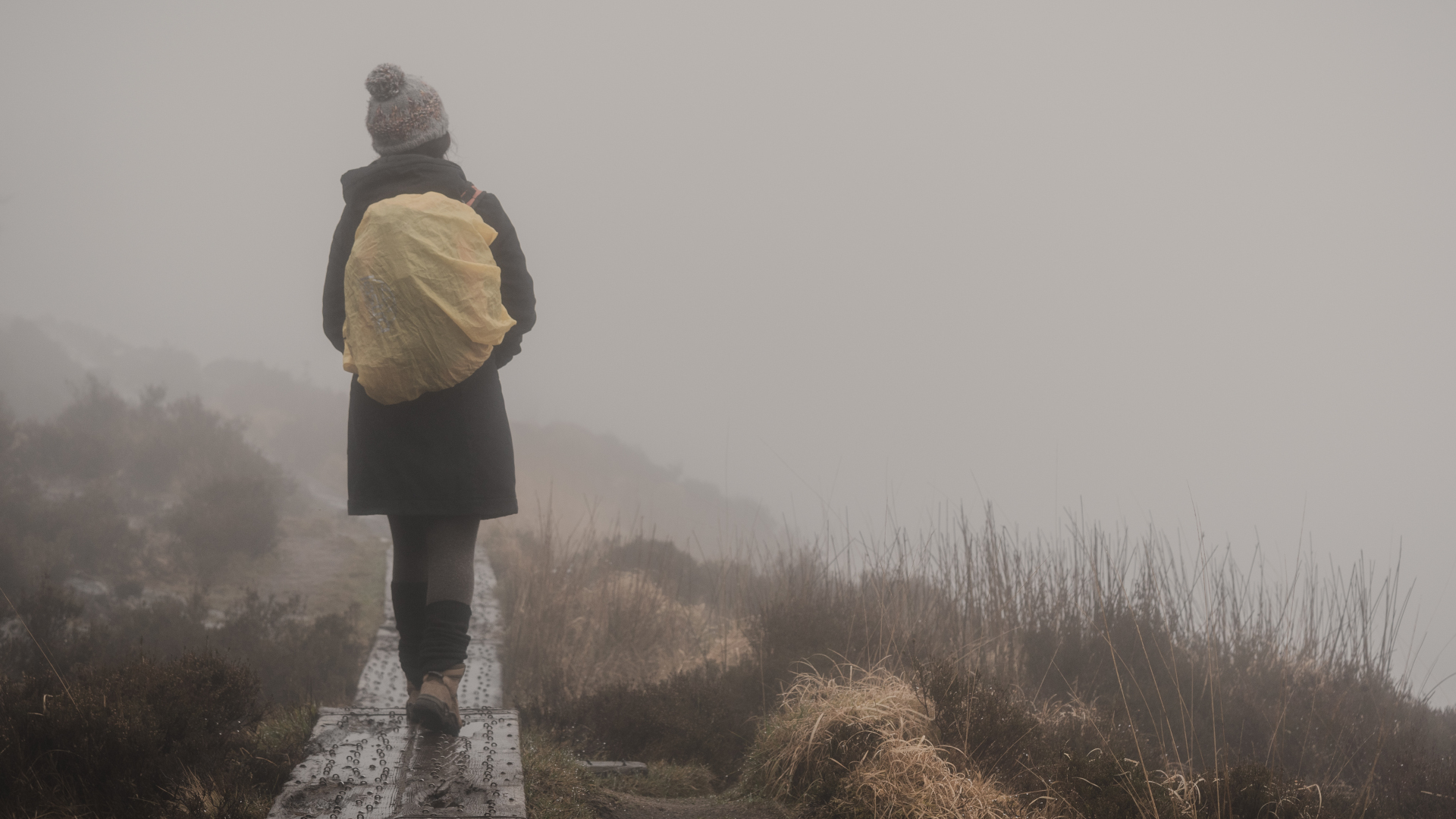Hiking in fog: 9 safety tips for low visibility conditions
Our fog safety tips help you navigate hiking trails – and stay out of harm’s way – when the clouds are touching the ground

As a hiker you might find hiking in fog to be one of the most hauntingly beautiful experiences you can have in your hiking boots. The refreshing touch of the moisture on your skin and the way low-lying cloud muffles ambient noise and makes you feel like you’re being hugged on a hill walk can all make for a really atmospheric day. Furthermore, if you live somewhere like Washington, Maine or the UK, you’ll simply be very used to foggy conditions. But when fog strikes on a hike, it lowers your visibility, and no matter how comfortable and confident you are, it’s good practice to follow some basic procedures to keep you and everyone in your party safe.

Is it ok to walk in fog?
There are several different types of fog, but all fog is essentially a cloud that touches the ground, according to National Geographic. Fog forms when warmer air meets a cooler surface and it can be light, making it difficult to see objects in the distance, or thick and heavy enough to obscure your immediate environment. Fog can move in suddenly as the result of changing weather patterns and may be more common in the morning after a night of rain. Fog can also sometimes settle on the tops of mountains, known as summit fog, even when it's sunny at the trailhead.
Hiking in fog isn’t necessarily dangerous, however it can be if the fog is extremely thick or if you’re hiking on a mountain, somewhere you’re not familiar with, or on a trail that isn’t well established. If you're on a rocky summit or walking along an exposed ridge and can’t see the edge, fog can become very dangerous.
Whether you’ve checked the weather forecast and are expecting fog on a hike, or it moves in unannounced, practice the following safety precautions to make sure you enjoy this beautiful weather event as best you can, and stay safe.

1. Research your route
Fog is a great reason to have researched your route up front. Yes, it can be fun to just set off on an adventure and see where the wind takes you, but when you can’t see more than a few feet in front of you, it will be helpful to have checked a route finding app or a guidebook and made some written or mental notes about what to expect from your route so you know whereabouts you might be and what to look out for.
2. Stay aware
If conditions are fogging up on the trail, really pay attention to any markers that might help you navigate your way back. Make note of unusual trees or rocks and what way you came from at any trail junctions.

3. Stick together
If you’re hiking with friends, we’d always recommend that the group sticks together, but this is never more important than when you’re trying to move through conditions like heavy fog. Slow down and walk in a tight line where everyone can reach out and touch the person in front of them. Don't break off even to go to the toilet. Make sure whoever is at the front is communicating with the rest of the group about what’s coming up ahead and make sure the person bringing up the rear isn’t left behind.
All the latest inspiration, tips and guides to help you plan your next Advnture!
4. Stay on the trail
If there is a trail, now is not the time to get off the beaten path. Even in quite a heavy fog, you can usually see what’s right in front of you – if you stick to the trail, you’ll usually be able to keep moving without getting lost, but again, keep your eyes peeled for trail junctions where you could get confused on the way back.

5. Use GPS
If you need help with navigation, foggy conditions are a time when GPS might actually win out over a map and compass. Either a GPS device or an app on your smartphone that uses GPS can help you make sure you’re heading in the right direction, even when you can’t see where you’re going. That said, you’ll still want to be looking around you to make sure your phone isn’t taking you over the edge of a cliff.
6. Don't forget your map and compass
We never recommend going on any hike without an area topographic map and a compass. Now, you might be wondering what good a map is if you can’t see past the end of your nose, but this is where actually knowing how to use these two tools comes in really handy. First, your GPS device or your smartphone can get you your coordinates, so then you can identify where you are on a paper map. Next, you can lay your compass on your map and keep moving it until north on your compass lines up with north on your map. Then you’ll have your bearings about what lies around you. Of course, you still need to know what direction you’re meant to be heading in, and this is where that little bit of route planning goes a long way.
- Learn how to use a compass

7.Wait it out
If the fog is so heavy that you really don’t feel like you can walk safely, or even if you’re just feeling a bit of panic setting in, don’t feel that you have to keep walking. You can always stop and wait to see if the fog will lift – often it burns off or blows away after a short amount of time. This is where it’s a good idea to carry extra clothing such as a fleece jacket, waterproof jacket, hat and best hiking gloves in your backpack so that you can stay warm and reasonably dry if it’s cold. It’s also useful to consider carrying an emergency group shelter, also known as a bothy bag, for bigger hikes that you can huddle in until the fog lifts.
8. Shed some light
Once night falls, a headlamp or flashlight can be useful in fog, but just pulling on your best headlamp can be a lot like turning on your high beams when you’re driving in fog – the water just reflects the light right back into your eyes and essentially causes a glare. Adjust your headlamp so it points down or carry it in your hand to help light up the ground in front of you.

9. Carry a hiking whistle
A hiking whistle is one of those items you could carry for years and never use, but if things really go wrong and you do require the services of mountain rescue, it could be a lifesaver in helping to communicate your location, especially if your phone has died and you’ve been unable to find your coordinates. Remember that all Osprey backpacks such as the Talon have a built-in hiking whistle on the buckle of the chest strap so if you already own one of those, you're all set. Make sure you learn the different distress signals in our article on hiking whistles.
Julia Clarke is a staff writer for Advnture.com and the author of the book Restorative Yoga for Beginners. She loves to explore mountains on foot, bike, skis and belay and then recover on the the yoga mat. Julia graduated with a degree in journalism in 2004 and spent eight years working as a radio presenter in Kansas City, Vermont, Boston and New York City before discovering the joys of the Rocky Mountains. She then detoured west to Colorado and enjoyed 11 years teaching yoga in Vail before returning to her hometown of Glasgow, Scotland in 2020 to focus on family and writing.

